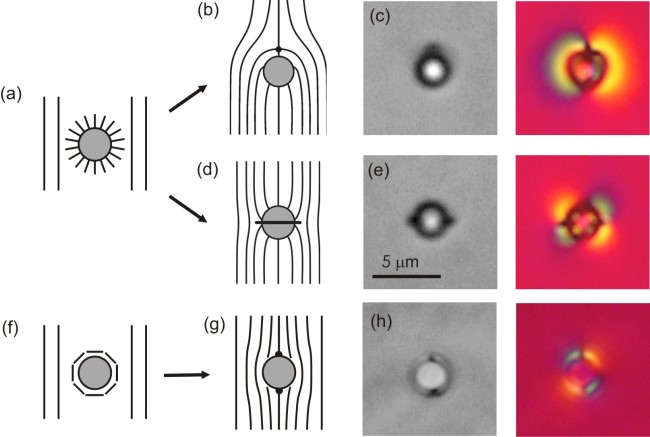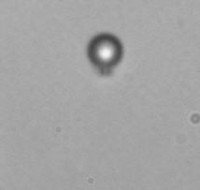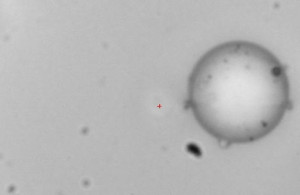Particles in Nematics
| Nematic colloids are dispersions of small colloidal particles in nematic liquid crystals. They show new classes of interparticle forces, which are anisotropic, long range, and several thousand times stronger than van der Waals forces in water-based colloids. |

When a small spherical particle is immersed in the oriented nematic, the surface of the particle interacts with the LC molecules and forces them to align into a preffered direction. If the LC molecules are oriented perpendicular to the surface of the particle (a), the resulting object has either dipolar symmetry (b), where a point defect accompanies the particle, or quadrupolar symmetry (d), where it is encircled by a small defect loop-the Saturn ring. Colloids with planar orientation of LC molecules (f) have qaudrupolar symmetry with two "Boojoums" defects. Those defects can be seen under microscope as dark spots since they scattered light (c, e, h). Coloured polarized images of the same colloids show the director field distribution.
|
|
|




